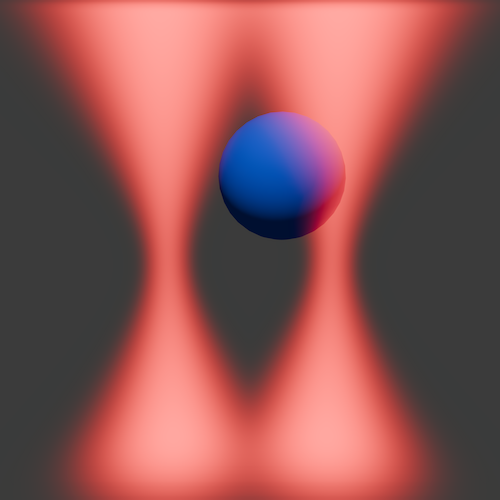
Antonio Ciarlo
Single-Molecule Sensors and NanoSystems International Conference – S3IC 2023
22 November 2023, 17:04 (CET)
Intracavity optical tweezers are a valuable tool for capturing microparticles in water by exploiting the nonlinear feedback effect induced by particle motion when confined in a laser cavity. This feedback effect arises as a consequence of the particle confinement inside a laser cavity, leading to fluctuations in the optical losses of the cavity due to Brownian motion. Our study extends intracavity optical trapping to both single-beam and counter-propagating dual-beam configurations, allowing us to investigate what happens when the two beams are slightly misaligned.
We used a 1030-nm Yb-doped ring fiber laser (pumped at 976 nm) with a hybrid optical path that allows light propagation in both fiber and air. To switch between single-beam and dual-beam configurations, a free-space removable isolator is incorporated, resulting in a single-beam configuration when the isolator is installed and a dual-beam configuration when the isolator is removed. We tracked particle positions in 3D using digital holographic microscopy and simultaneously measured the powers of the two counter-propagating beams, providing insight into the feedback effect. A crucial aspect of our experiment is the ability to introduce a transverse offset between the two optical beams in the two-beam configuration, resulting in periodic particle motion.
Our study has revealed a periodic orbital rotation of the particle that is closely related to the behavior of the two laser beam powers. We investigated the effect of beam separation and laser pump power on this phenomenon.
This phenomenon results from the interplay of gradient force, scattering force, and nonlinear feedback. The trapped particle undergoes periodic transitions between the two traps, causing a periodic variation in the laser power of the two beams. As a result, the particle acts as a micro-isolator, attenuating the beam in which it is trapped and amplifying the other beam. It was also observed that the duration of the transition increases as the pump power decreases and the distance between the two traps increases.
Future research will focus on refining the trapping configurations to exploit their potential for precise particle manipulation in the field of nanothermodynamics.